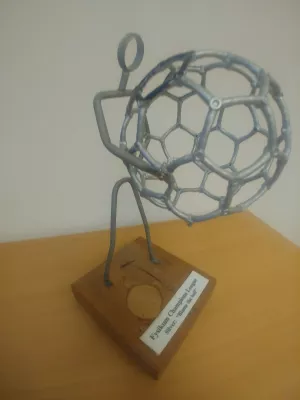
Balazs Konya
Researcher

Two-particle azimuthal correlations in photonuclear ultraperipheral Pb+Pb collisions at 5.02 TeV with ATLAS
Author
Summary, in English
Two-particle long-range azimuthal correlations are measured in photonuclear collisions using 1.7nb-1 of 5.02 TeV Pb+Pb collision data collected by the ATLAS experiment at the CERN Large Hadron Collider. Candidate events are selected using a dedicated high-multiplicity photonuclear event trigger, a combination of information from the zero-degree calorimeters and forward calorimeters, and from pseudorapidity gaps constructed using calorimeter energy clusters and charged-particle tracks. Distributions of event properties are compared between data and Monte Carlo simulations of photonuclear processes. Two-particle correlation functions are formed using charged-particle tracks in the selected events, and a template-fitting method is employed to subtract the nonflow contribution to the correlation. Significant nonzero values of the second- and third-order flow coefficients are observed and presented as a function of charged-particle multiplicity and transverse momentum. The results are compared with flow coefficients obtained in proton-proton and proton-lead collisions in similar multiplicity ranges, and with theoretical expectations. The unique initial conditions present in this measurement provide a new way to probe the origin of the collective signatures previously observed only in hadronic collisions. © 2021 CERN. CERN, for the ATLAS Collaboration. Published by the American Physical Society under the terms of the Creative Commons Attribution 4.0 International license. Further distribution of this work must maintain attribution to the author(s) and the published article's title, journal citation, and DOI.
Department/s
- Particle and nuclear physics
- eSSENCE: The e-Science Collaboration
Publishing year
2021
Language
English
Publication/Series
Physical Review C
Volume
104
Issue
1
Document type
Journal article
Publisher
American Physical Society
Topic
- Subatomic Physics
Status
Published
ISBN/ISSN/Other
- ISSN: 2469-9985

